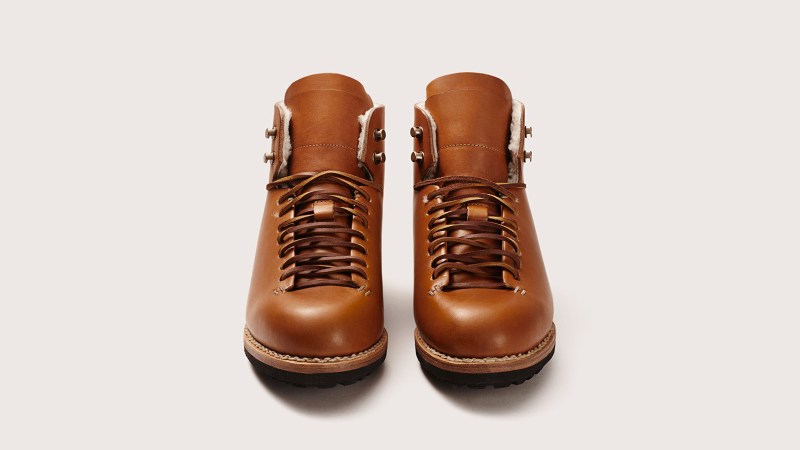Man isn’t meant to stay indoors — our weekly “Trekking” column can attest to that. It’s a column dedicated to the adventurer inside of all of us, the one pining to ditch the office humdrum for a quick surf session or seven-week jaunt in the Tetons. One day we may highlight an ultra-light stove and the next a set of handmade canoe paddles. Life doesn’t just happen inside the workplace.
There’s a common misconception that the backcountry is no place for luxury. However, while the notion may apply to certain aspects of camping, it doesn’t necessarily apply to all facets of the outdoor experience. A proper pair of boots are as pivotal to hiking as water, conveniently providing your tired feet with both shelter and support whether you’re trudging through snow-capped, alpine forests or hitting the short jaunt to your local swimming hole. Either way, the FEIT Wool Hiker ($760) has you covered.
First off, there’s reason for the exuberant price tag. A single, master craftsman handmakes each pair of boots from start to finish using an advanced Goodyear construction technique, which is a welcome alternative given most boots simply hit the assembly line with a focus on quantity opposed to quality. Moreover, each boot — which is available in black, light brown, or dark brown — is lined with a plush wool lining intended to keep your feet warm with or without socks in the most frigid of conditions. The Vibram Gumlite-lugged outsole and buffalo-leather insole take each shoe to the next level, too, ensuring grip, durability, and a superior fit regardless of your sizing.

The resounding craftmanship doesn’t stop with the grade-A materials, though. A single piece of leather is handstitched at the heel to create the one-piece upper, while a gusseted tongue and natural dying process reinforces the waterproof nature of the boots and allows their color to richly age over time. The natural materials also let the boot properly breathe and deter unwanted odor, while light steam and humidity work to tighten the leather and enhance the overall shape over a 10-day sitting period.
And while the ubiquitous “they” often say the best things in life are free, that’s evidently not always the case. After all, the FEIT Wool Hiker cost nearly $800.






